Disclosure: Meeple Mountain received a free copy of this product in exchange for an honest, unbiased review. This review is not intended to be an endorsement.
My first interaction with Gap Closer Games arrived when I chatted with Gary Alaka at GAMA Expo, during a demo of the party word-building game Illiterati back in March.
Illiterati was fantastic, so getting the chance to go backwards in the Gap Closer catalog was a welcome invitation. Rival Restaurants hit in 2019 after a massive crowdfunding campaign, adding expansion content the year after it was released.
Rival Restaurants is fun, but it shines brightest at the highest player count of 6 players. Strangely, it also plays well at a much smaller number. If you can handle some pretty random situations, prep the table for a good time.

The Reservation Limit? 30 Minutes
During COVID, the weirdest thing happened: restaurants decided that parties of 4 or less were usually given the boot after just 90 minutes of their reserved table time.
I used to love sitting at a table at local restaurants in Chicago, chatting with friends, going for that second, third, maybe even the fourth, round of drinks. Catching up, enjoying the scene, spending money.
COVID changed all of that; now, it feels like many restaurants do their best to bring meals to my table even faster than they already did, getting you in and out in an hour, or maybe even less. It’s nearly impossible now thanks to lower staffing levels to overstay your welcome.
Rival Restaurants suffers through only one real issue that has surfaced during each of my plays—it’s a little too long. It’s a 30-minute meal, but it takes about an hour or more to eat it all. You really begin to notice this with newer players as they try to maximize turns to get orders out the door.
The game’s premise is simple: play a series of rounds as the chef of a random restaurant until someone scores 20 points, known as Popularity in the game’s parlance. You do this by gathering income each round, then simultaneously picking one of the 7 market locations in the game to buy ingredients for the recipes in front of you.
After buying ingredients (cards), each player “cooks” one of these two recipes by discarding ingredients to score points. Just like in real life, cooking generates garbage, appearing here in the form of garbage tokens which have to eventually be cleared from your supply. If you don’t clear garbage, future meals don’t score as well.

After the location cards are cleaned up, rinse and repeat until someone scores 20 points. During gameplay, each player takes on the persona of a chef with an ongoing power, and has access to Action Cards which mess with other players. Some Action Cards allow you to rob other chefs of cash or ingredients, some nullify “take that” cards, some do fun and wacky things when played.
There are also upgrades available—a boost in income, a Double Cooktop which allows players to cook both of their recipes at the same time, etc. As well, each player board is a restaurant which gives a small bonus for cooking recipes that align with a preferred cuisine.
So, there’s some variety within each play, with blank recipe cards and player boards that allow truly creative players to craft cool things into their unique style during setup.
All of that is great. The art style is fun, the teach is really easy, and the pick-up-and-deliver style of grabbing ingredients to satisfy a card’s conditions feels good.
But Rival Restaurants should be shorter. It’s not going to break the game, but I was surprised how much I noticed the length during each play.
Rival Restaurants is a large appetizer. It shouldn’t take so long to gather all the items you need to fulfill orders. If you don’t have the money to go to the Mystery Mart—where all the game’s best cards live, because these cards break the game’s base rules—you’ll have to go to Carb Tastic to buy bread, then spend your next turn at the Chop Shop to buy poultry, then the following turn at the Fruit Stand to pick up the rest of what you need to fulfill a sample Basic Recipe.
All of this work might net you 3 points. It’s not the stuff of legend, and it might not be super interesting, but there’s not another way to really speed this up unless you have a player power that breaks the game a bit.

The Table Size? Gimme a Six Top…
Playing Rival Restaurants with 3 players is not recommended. There’s no competition when going to the various markets around the board—the game’s “Barter” mechanic only triggers if multiple players want the exact same card in a space—and a shocking number of the chef powers don’t trigger if there’s not enough other players in the game.
For example, I was dealt Señor Fuego for my first game at 3 players. His power: when any other player goes to the same market as Señor Fuego, they must pay him $200 to go there. That would be great, if there was ever any competition. During the entire game, I was never at the same location as another player.
Worthless.
Chef powers should scale with player count, but this is not explicitly made clear in the rules. Another issue: Action Cards don’t have timing listed on the cards, for the most part. Some can be played specifically during the income round, or during the “Buy and Barter” action. But most timing is not listed; a couple of cards let you take money from other players whenever you want, and in any order.
I love chaos in my games, but these types of rules should be called out.
Without a doubt, this is a 6-player game that could also be played at 5. Below that player count, many of the things you’ll enjoy may not surface. Bartering is almost certainly going to happen with 6 players. The markets will be tighter. There might be a little more yelling.
Sign me up. But at 3 players, that is noticeably missing.
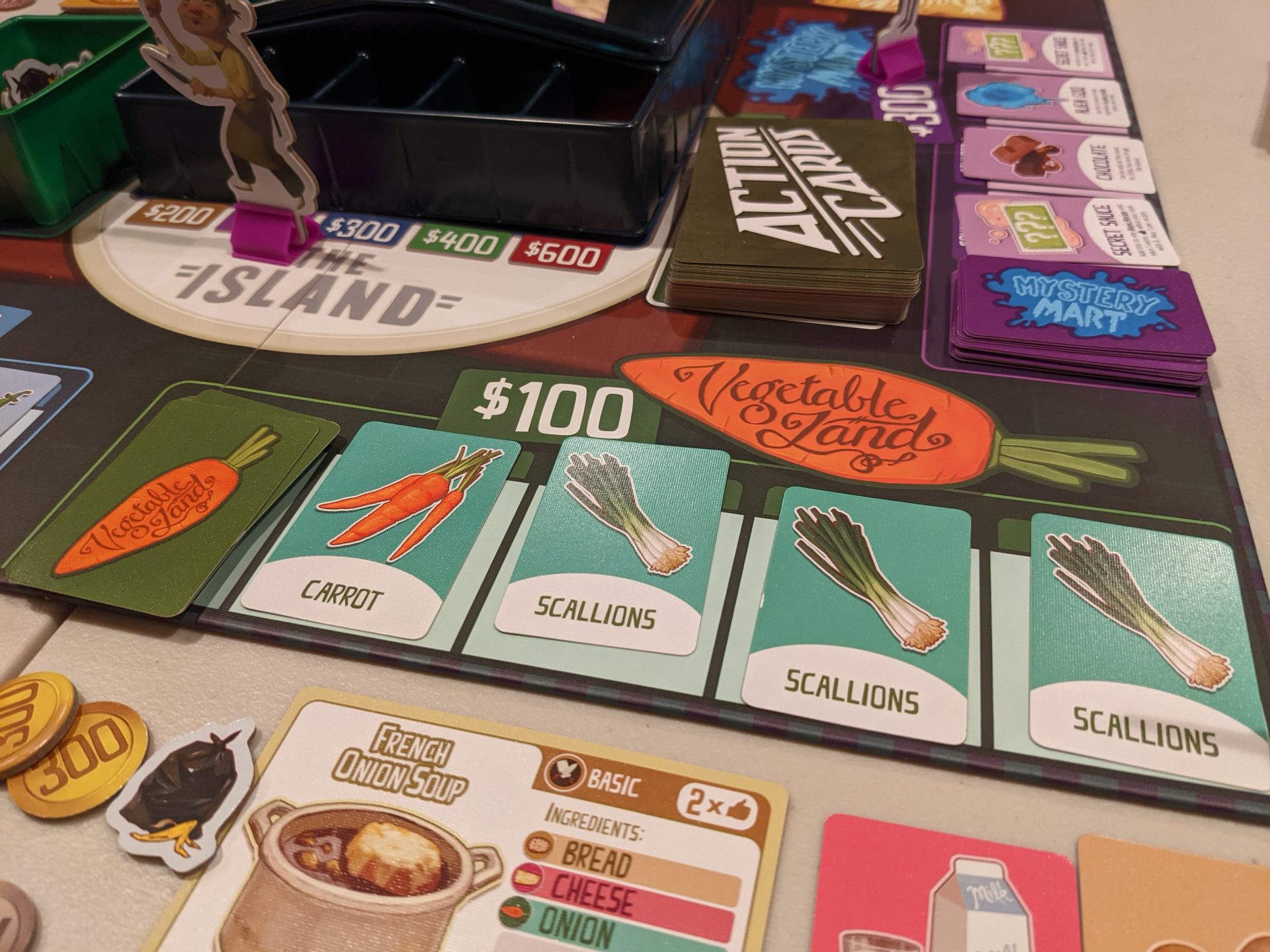
…or, Maybe a Two-Top?
Now, at 2 players, the rules for Rival Restaurants change a bit and I enjoyed my single 2-player game much more than my 3-4 player games.
That’s because each player is given a team of 3 chefs, any one of which can be used during a single round. Then, each player also has an “NPC” (confusingly but humorously used not as a “non-player character” like in video games but as a Non-Plating Chef) which can be used both as a blocker against where the other player wants to go, but as a shopper who has to pay slightly more for ingredients.
This creates slightly more planning for each player, but also slightly less frustration as you move around each turn to gather the single item you need from each shop to cook recipes. The player powers are in play every turn because you’ve got three chefs to choose from (only the active chef’s power triggers in a round), and it’s much easier to focus on what your opponent needs to shop for each round because you only have to check on the two recipes in front of your single opponent.
A 2-player game of Rival Restaurants only takes about 30 minutes thanks to having two people shopping for your recipes each turn. If there won’t be abject chaos, at least I can get a quick game in and still enjoy the race elements of the game’s play structure.
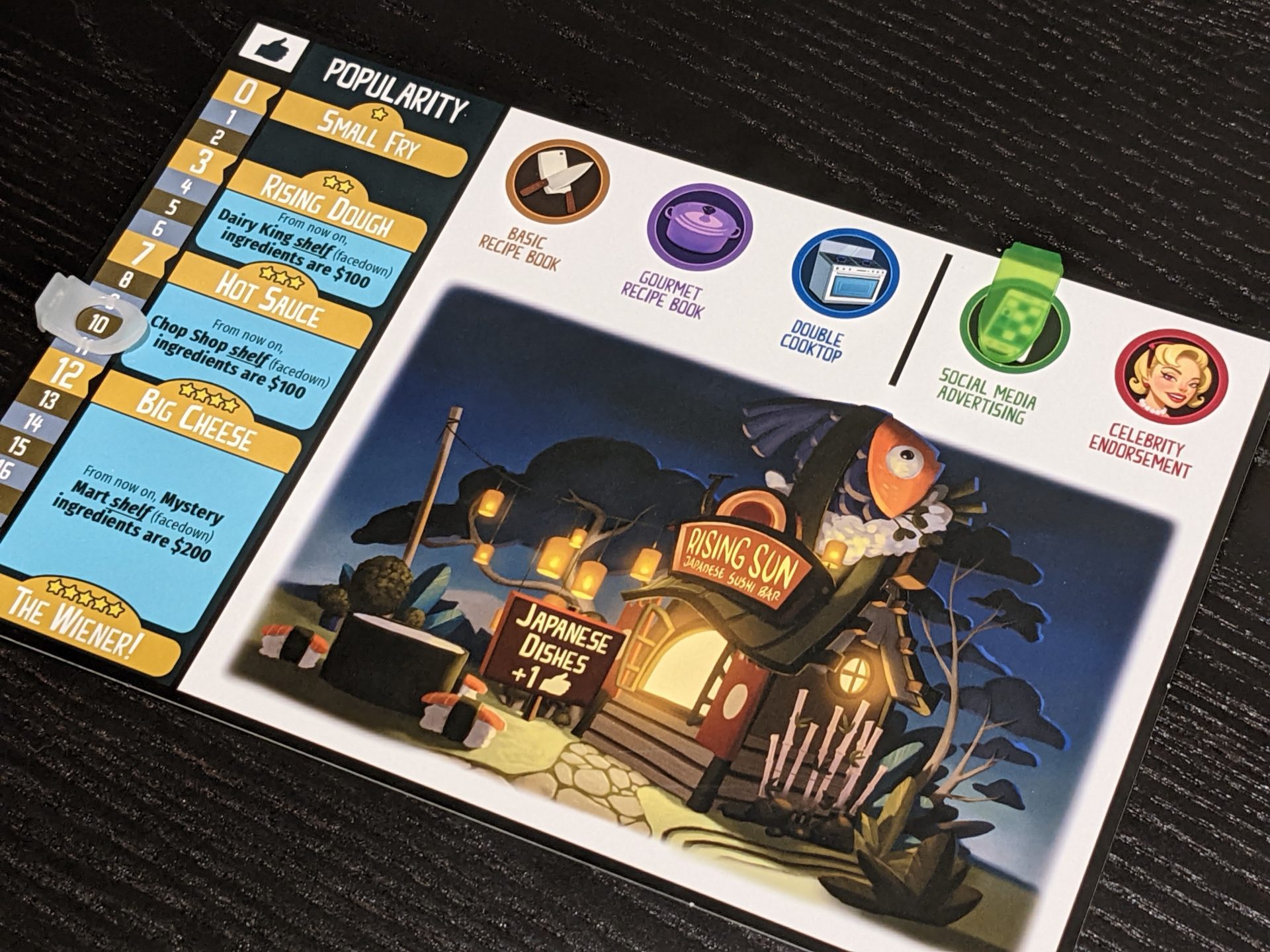
A Note About Randomness
I’m just going to warn you now: you’re probably going to have a play or two of Rival Restaurants where your neighbor is going to come out of the gates hot because they drew an incredible synergy of initial cards.
Every game starts with a player drawing 5 ingredients, one from each of the 5 basic, non-Mystery Mart decks. Each player also draws a Basic Recipe and a Gourmet Recipe card, which provides your starting orders. It’s very possible that someone draws exactly the ingredients they need to satisfy a Basic Recipe (some of which only require 2 ingredients), scoring them some points.
Further, that Basic Recipe might be, say, a Chinese dish, which helps the player who happens to have the Chinese restaurant player board, meaning they get a bonus point whenever they satisfy Chinese orders. Every player gets a bonus at the 3, 7, and 12-point threshold, so it’s possible that on the first turn of the game, one player has earned their first bonus.
You could even have a situation that happened in one of my plays, where I happened to draw a Gourmet American recipe as the player holding the Uncle Sam’s American BBQ restaurant. By my second turn, I was able to rob the other players of enough cash to buy the cards I needed to satisfy that recipe. It was worth 6 points, but with my player power, it was worth 7 points, which meant I got both my 3- and 7-point threshold bonuses, which boosted my income to $500 per round (all other players still had the base income of $300/round).
Some players are not going to love that. But if you come in knowing this is possible, you’ll be (maybe) less angry when your neighbor is off to the races.
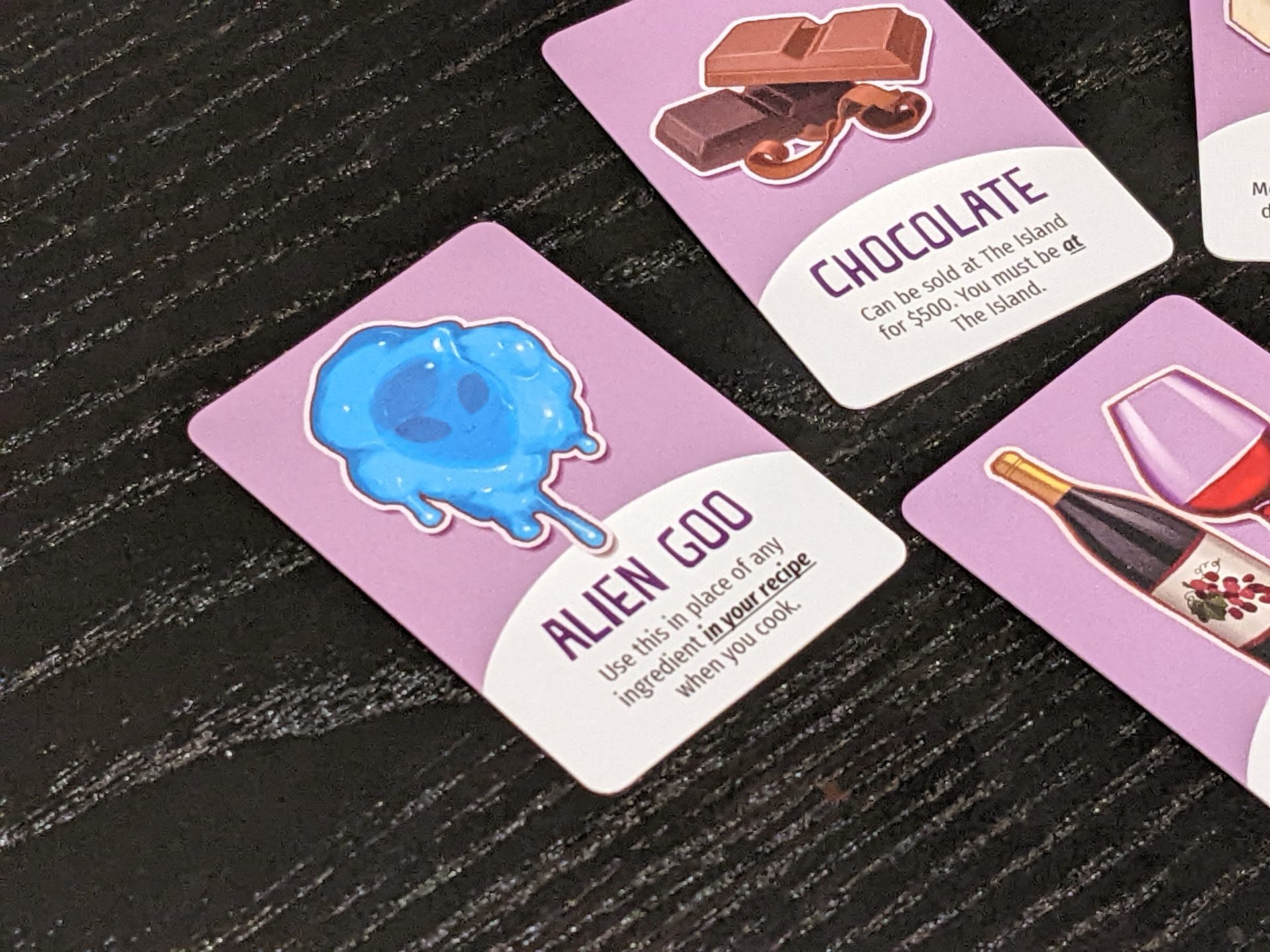
18% Gratuity Added for Large Parties
If you’ve got a large group, Rival Restaurants is highly recommended. Alternatively, if you have exactly 2 players, Rival Restaurants also landed well for me. But at 3-4 players, there just isn’t quite enough going on as a party game with not quite enough of a party.
Could the game be shorter? Yes, and I could see a future where I house-rule the win condition down from 20 points to something like 12 or 15 points, especially with more people at the table. Some clean-up of when Action Cards can be played, and more options to take or leave the take-that elements probably will be best for certain players.
Otherwise, I had fun with Rival Restaurants and I’m curious to see what the expansion, Rival Restaurants: Back for Seconds, adds. As is, the chef powers add plenty of variety, as do the different player boards. The family weight of this game means that if you remove the take-that Action Cards, it’s a fun race to see who can find the cards that line up with recipes faster than Mom, Uncle Tony, your brother and his best friend.
The potential chaos of a crowded board state gives Rival Restaurants an edge if you are looking for a short teach and family fun. And with a chef name like Lovehandles McFatterson, it’s hard to not see the comedic beauty in this style of game!


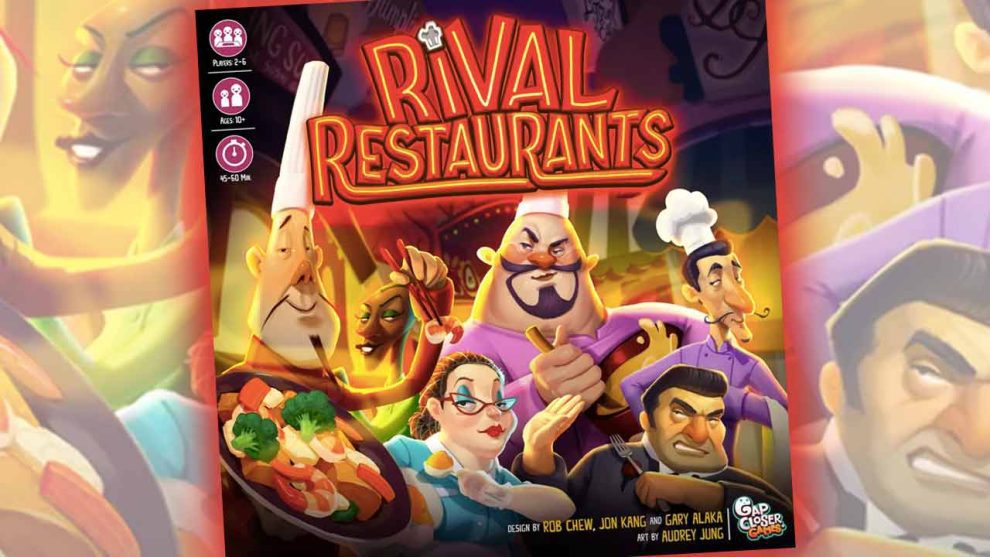
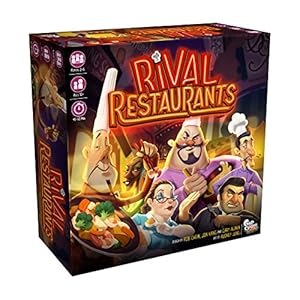








It’s your fault that Senor Fuego didn’t work for you. You need to look at other chefs recipes and figure out where they want to go and make that work with your recipes. Most of the complaints in this review sound like someone who’s playing poorly. This game is a banger at any number and we’ve always thought the length was perfect, just under and hour each time we play at any number.